by Jose Antonio PhD FNSCA FISSN. Today’s story is entitled “Cardio lowers RMR – A Fairy Tale.”
Key Points to Remember
- There is a plethora of scientific evidence, which demonstrates that regular aerobic training has no effect on RMR. Some studies actually find an increase.
- Resting energy expenditure is largely a function of body weight and FFM.[1, 2]
- Cardio has become the “carbs of the fitness world.” – Shawn Arent PhD, Rutgers University
- If you like doing cardio, don’t let some fitness guru talk you out of it.
- If you hate doing cardio, then for Pete’s sake, don’t bitch about those who do it.
- If you want to elevate your RMR, gain weight, especially skeletal muscle weight (note: for every 1 pound of LBM you gain, your RMR may go up ~10 kcal; so do the math. You’ll need to gain a helluva lot of weight).
- RMR is by itself a meaningless measure for the performance sports.
- If you compete in football, baseball, basketball, cycling, volleyball, rowing, surfing, paddling, gymnastics, soccer, hockey, track and field (pick one) or frickin’ tiddlywinks, measuring RMR is about as useful as selling bikinis to Russian women in Siberia.
Social Media Silliness
So what is it about aerobic training (i.e., ‘cardio’) that has gotten the ire of so many fitness professionals? Cardio makes you fat? Yep. And there really is a pot of gold at the end of the rainbow. For my take on the ’cardio makes you fat’ baloney, read this piece from the ISSN Scoop: http://www.theissnscoop.com/cardio-makes-you-fat-and-apples-will-rise/
Supposedly cardio, especially the lower intensity variety, will lower your resting metabolic rate  (RMR) faster than a New Yorker can flip you the birdie. So I guess if you go for a walk on the beach after pigging out on beer and chicken wings, your metabolic rate will magically drop?
(RMR) faster than a New Yorker can flip you the birdie. So I guess if you go for a walk on the beach after pigging out on beer and chicken wings, your metabolic rate will magically drop?
Let’s say you and your significant other visited the Sunshine State (that’s Florida for those who flunked 7th grade geography). Every morning for a week, you walk hand-in-hand up and down the beach. Sometimes you’d walk for more than an hour. Would your RMR drop because of this dreaded low intensity cardio? Are all these beach walkers killing their RMR? To quote the former #1 tennis player and part-time brat on the court John McEnroe, “You can NOT be serious!”
 Easy enough. So what does the science say on cardio and RMR? Below are a series of abstracts that I’ve shortened and added my pithy comments. It’ll give you a snapshot of the literature as it relates to exercise training and RMR. I’ve highlighted the parts that are of interest to those of you with the attention span of a mosquito.
Easy enough. So what does the science say on cardio and RMR? Below are a series of abstracts that I’ve shortened and added my pithy comments. It’ll give you a snapshot of the literature as it relates to exercise training and RMR. I’ve highlighted the parts that are of interest to those of you with the attention span of a mosquito.
Study #1 – This study examined resting metabolic rate (RMR) and thermic effect of a meal (TEM) among athletes who had participated in long-term anaerobic or aerobic exercise. Nine collegiate wrestlers were matched for age, weight, and fat-free weight with 9 collegiate swimmers. RMR adjusted for fat-free weight was not significantly different between groups. Thus, it doesn’t matter if you engage in long-term aerobic and anaerobic exercise training; resting energy expenditure is not different between these college athletes.[3] So whether you want to swim in chlorinated water or wrestle someone who smells like dirty socks soaked in vinegar, it don’t matter. RMR won’t be adversely affected.
Study #2 – Eight moderately obese women took part in an 11-week training program, including 5 hours of aerobic exercise per week performed at a mean intensity of about 50 percent VO2 max. Now that my friends is frickin’ low intensity. Fifty percent max VO2 is like a walk in the park. So what happened? Oddly enough, the results showed that exercise-training induced a significant rise in RMR. In fact, this study showed an elevated RMR per unit of fat free mass in both lean and moderately obese individuals.[4]
Study #3 – Thirty-one women (mean age 35 yr) who were overweight were matched and randomly placed into a control group (CON), a diet-only group (D), a diet+aerobic endurance exercise training group (DE), or a diet+aerobic endurance exercise training+strength training group (DES). Can you keep track of that? That’s a lot of groups. So after 12 weeks, the three dietary groups demonstrated a significant loss in body mass, % body fat, and fat mass. No differences were observed in the magnitude of loss among groups, in fat-free mass, or in resting metabolic rate.[5] So even though aerobic training plus diet resulted in a loss of weight and fat mass, there was no change in RMR. Hmmm.
Study #4 – The effects of either 12-wk of high-intensity endurance or resistance training on resting metabolic rate (RMR) were investigated in 47 males aged 18-35 years. Subjects were randomly assigned to either a control (C), resistance-trained (RT) or endurance-trained (ET) group. After training both exercise groups showed significant declines in relative body fat either by reducing their total fat weight and maintaining fat-free weight (ET) or by reducing their total fat weight and increasing fat-free weight (RT). RMR did not significantly change after either training regimen. These results suggest that both endurance and resistance training may help to prevent an attenuation in RMR normally observed during extended periods of negative energy balance (energy intake less than expenditure) by either preserving or increasing a person’s fat-free weight.[6]
Study #5 – Investigators determined the effects of aerobic exercise training and resistance exercise training and the incremental effect of combined aerobic and resistance exercise training on resting metabolic rate (RMR) in previously sedentary individuals with type 2 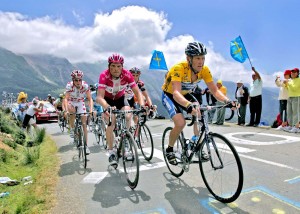 diabetes. One hundred and three participants were randomly assigned to four groups for 22 weeks: aerobic training, resistance training, combined aerobic and resistance exercise training, or waiting-list control. Exercise training was performed three times per week at community-based gym facilities. RMR did not change significantly in any group after accounting for multiple comparisons despite significant improvements in peak oxygen consumption and muscular strength in the exercising groups. Adjusting RMR for age, sex, fat mass, and fat-free mass in various combinations did not alter these results. These results suggest that RMR was not significantly changed after a 6-month exercise program, regardless of modality, in this sample of adults with type 2 diabetes.[7] Geez. Is there a pattern here? Isn’t cardio supposed to make you fat? Ooops, I mean lower RMR?
diabetes. One hundred and three participants were randomly assigned to four groups for 22 weeks: aerobic training, resistance training, combined aerobic and resistance exercise training, or waiting-list control. Exercise training was performed three times per week at community-based gym facilities. RMR did not change significantly in any group after accounting for multiple comparisons despite significant improvements in peak oxygen consumption and muscular strength in the exercising groups. Adjusting RMR for age, sex, fat mass, and fat-free mass in various combinations did not alter these results. These results suggest that RMR was not significantly changed after a 6-month exercise program, regardless of modality, in this sample of adults with type 2 diabetes.[7] Geez. Is there a pattern here? Isn’t cardio supposed to make you fat? Ooops, I mean lower RMR?
Study #6 – Sixty-five healthy, weight-stable women, aged 21-35 or 50-72 years, were studied: 12 premenopausal and 15 postmenopausal sedentary women, 13 premenopausal and 15 postmenopausal distance runners, and 10 endurance-trained postmenopausal swimmers. RMR was measured by indirect calorimetry (ventilated hood system) after an overnight fast, and values were adjusted for fat mass and fat-free mass. Our results are consistent with the concept that the age-related decline in RMR in sedentary women is not observed in women who regularly perform endurance exercise. The elevated level of RMR observed in middle-aged and older exercising women may play a role in their lower levels of body weight and fatness compared to those in sedentary women.[8] Wait, did I read that correctly? Women who performed dreaded cardio actually were able to fight the age-related drop in RMR.
Study #7 – This study investigated the effects of 12 weeks of aerobic exercise plus voluntary food restriction on the body composition, resting metabolic rate (RMR) and aerobic fitness of mildly obese middle-aged women. The exercise/diet group participated in an aerobic training 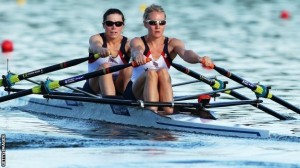 program, 45-60 minutes daily at 50%-60% of maximal oxygen uptake (VO2max), 3-4 days per week, and also adopted a self-regulated energy deficit relative to predicted energy requirements. After the regimen had been followed for 12 weeks, the body mass of the subjects had decreased by an average of 4.5 kg, due mainly to fat loss, with little change of fat free mass (mff). The absolute RMR did not change, but the experimental group showed significant increases in the RMR per unit of body mass (10%) and the RMR per unit of mff (4%). The increase in RMR/mff was not correlated with any increase in VO2max/mff. The resting heat production per unit of essential body mass increased by an average of 21%, but the resting heat production rate per unit of fat tissue mass remained unchanged. We concluded that aerobic exercise enhances the effect of moderate dietary restriction by augmenting the metabolic activity of lean tissue.[9] Huh? Regular aerobic exercise increases RMR per unit body weight. Get on that treadmill! Ok, not really. Treadmill running is as much fun as wrestling a porcupine.
program, 45-60 minutes daily at 50%-60% of maximal oxygen uptake (VO2max), 3-4 days per week, and also adopted a self-regulated energy deficit relative to predicted energy requirements. After the regimen had been followed for 12 weeks, the body mass of the subjects had decreased by an average of 4.5 kg, due mainly to fat loss, with little change of fat free mass (mff). The absolute RMR did not change, but the experimental group showed significant increases in the RMR per unit of body mass (10%) and the RMR per unit of mff (4%). The increase in RMR/mff was not correlated with any increase in VO2max/mff. The resting heat production per unit of essential body mass increased by an average of 21%, but the resting heat production rate per unit of fat tissue mass remained unchanged. We concluded that aerobic exercise enhances the effect of moderate dietary restriction by augmenting the metabolic activity of lean tissue.[9] Huh? Regular aerobic exercise increases RMR per unit body weight. Get on that treadmill! Ok, not really. Treadmill running is as much fun as wrestling a porcupine.
Study #8 – Scientists examined the effect of a 12-wk endurance exercise training program on RMR and 2) to provide insight into the mechanisms responsible for alterations in RMR that may occur after exercise training. Male participants (19-32 years) in an exercise group (EX) performed jogging and/or running 3-4 days per week, 25-40 min per session, at 60%-80% VO2max, whereas subjects in a control group (CON) maintained their normal activity patterns. Body composition, VO2max, RMR, epinephrine, norepinephrine, total thyroxine, free thyroxine, insulin, free fatty acids, and glucose were measured before and after the intervention.Training resulted in a significant increase in VO2max in EX. Absolute and relative values for RMR did not significantly change in EX (endurance training group) after training. Mean values for epinephrine, norepinephrine, total thyroxine, insulin, and glucose did not significantly change in either group; however, free thyroxine decreased significantly after training in EX. Oddly enough, RMR in CON decreased significantly when expressed as an absolute value and relative to body weight, fat-free mass, and fat mass. The mechanism for the decrease in CON is unknown, but it may be related to seasonal variations in RMR. Training may have prevented a similar decline in RMR in EX and may be related to a training-induced increase in fat oxidation.[10]
Study #9 – We tested the hypothesis that resting metabolic rate (RMR) declines with age in physically active men (endurance exercise > or = 3 times/wk) and that this decline is related to weekly exercise volume (h/wk) and/or daily energy intake. Accordingly, scientists studied 137 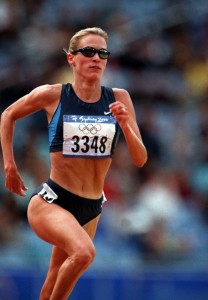 healthy adult men who had been weight stable for 6 months or longer. What they found was fascinating: 1) RMR, per unit FFM, declines with age in highly physically active men; and 2) this decline is related to age-associated reductions in exercise volume and energy intake; 3) this does not occur in men who maintain exercise volume and/or energy intake at a level similar to that of young physically active men.[11] So that’s the secret. Exercise a lot (even cardio is good) and eat a lot. My kind of program!
healthy adult men who had been weight stable for 6 months or longer. What they found was fascinating: 1) RMR, per unit FFM, declines with age in highly physically active men; and 2) this decline is related to age-associated reductions in exercise volume and energy intake; 3) this does not occur in men who maintain exercise volume and/or energy intake at a level similar to that of young physically active men.[11] So that’s the secret. Exercise a lot (even cardio is good) and eat a lot. My kind of program!
Study #10 – Is a 1-year study long enough for you? Let’s find out. Seventeen sedentary participants completed a 12 months jogging/walking program, 3 days/week for 45 min/session at a constant heart rate (HR) prescription of 60% HR-reserve. That’s pretty easy cardio if you ask me! After 12 months of training, body weight remained unchanged; however, body fat was significantly reduced by 3.4 %. Neither RMR nor substrate oxidation at rest changed significantly. In summary one year of recreational endurance training does NOT negatively impact RMR.[12] I know I know. Naysayers will say “that study isn’t long enough.” “We need a 10 year study to verify these results.” Blah blah blah.
Study #11 – Scientists determined whether chronic (9 months) moderate-intensity exercise training changes resting metabolic rate (RMR) and substrate oxidation in overweight young adults. Participants were randomly assigned to non-exercise control (CON, 18 women, 15 men) or exercise (EX, 25 women, 16 men) groups. EX performed supervised and verified exercise 3-5 d/week, 20-45 min/session, at 60-75% of heart-rate reserve. Here’s what happened. EX men had significant decreases from baseline to 9 months in body mass (94.6 to 89.2 kg) and percent fat 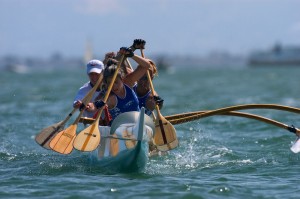 (28.3 to 24.5). CON women had significant increases in body mass (80.2 to 83.2 kg) from baseline to 16 months. VO2max increased significantly from baseline to 9 months in the EX men and women. RMR increased from baseline to 9 months in EX men and women. So there you have it. Regular moderate-intensity exercise in healthy, previously sedentary overweight and obese adults increases RMR but does not alter resting substrate oxidation. Women tend to have higher RMR and greater fat oxidation, when expressed per kilogram fat-free mass, than men.[13] That’s interesting. Women have a greater RMR per kg FFM than men. Hmmm. So women have no excuse for packing on the lbs. 😛
(28.3 to 24.5). CON women had significant increases in body mass (80.2 to 83.2 kg) from baseline to 16 months. VO2max increased significantly from baseline to 9 months in the EX men and women. RMR increased from baseline to 9 months in EX men and women. So there you have it. Regular moderate-intensity exercise in healthy, previously sedentary overweight and obese adults increases RMR but does not alter resting substrate oxidation. Women tend to have higher RMR and greater fat oxidation, when expressed per kilogram fat-free mass, than men.[13] That’s interesting. Women have a greater RMR per kg FFM than men. Hmmm. So women have no excuse for packing on the lbs. 😛
Study #12 – Maybe it does decrease RMR? Scientists examined the effects of exercise training on resting metabolic rate (RMR) in moderately obese women. Nineteen previously sedentary, moderately obese women (age = 38.0 years, percent body fat = 37.5) trained for 20 weeks using either resistance training (RT) or a combination of resistance training and walking (RT/W). The high intensity resistance-training program was designed to increase strength and fat-free mass and the walking program to increase aerobic capacity. There was also a non-exercising control 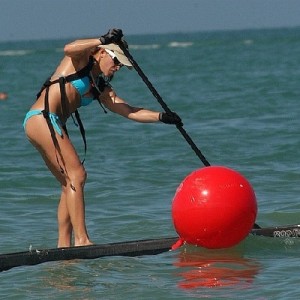 group (C) of 9 subjects in this study. Fat-free mass was significantly increased in both the RT (+1.90 kg) and RT/W (+1.90 kg) groups as a result of the training program. So apparently adding walking to weight training does not negatively impact gains in LBM. No group showed significant changes in fat mass or relative body fat from pre- to post-training. This runs counter to the ubiquitous advice of weight training being a superior method of achieving fat loss. Furthermore, aerobic capacity was slightly, though significantly, increased in the RT/W group only. The RT group showed a significant increase (+44 kcal per day), while the RT/W group showed a significant decrease (-53 kcal per day in resting metabolic rate post-training. RT can potentiate an increase in RMR through an increase in fat-free mass, and the decrease in RMR in the RT/W group may have been a result of heat acclimation from the walk training.[14] This study shows a difference. Though I’d posit that the lower RMR is made up for by the extra walking in the resistance training plus walking group. Besides, isn’t weight training supposed to combat the effects of a lower RMR?
group (C) of 9 subjects in this study. Fat-free mass was significantly increased in both the RT (+1.90 kg) and RT/W (+1.90 kg) groups as a result of the training program. So apparently adding walking to weight training does not negatively impact gains in LBM. No group showed significant changes in fat mass or relative body fat from pre- to post-training. This runs counter to the ubiquitous advice of weight training being a superior method of achieving fat loss. Furthermore, aerobic capacity was slightly, though significantly, increased in the RT/W group only. The RT group showed a significant increase (+44 kcal per day), while the RT/W group showed a significant decrease (-53 kcal per day in resting metabolic rate post-training. RT can potentiate an increase in RMR through an increase in fat-free mass, and the decrease in RMR in the RT/W group may have been a result of heat acclimation from the walk training.[14] This study shows a difference. Though I’d posit that the lower RMR is made up for by the extra walking in the resistance training plus walking group. Besides, isn’t weight training supposed to combat the effects of a lower RMR?
So in conclusion: The preponderance of the evidence clearly shows that regular aerobic training has little to no effect on RMR. So you can put the notion of ‘cardio lowering RMR’ in the trash bin where it’ll join the ‘cardio makes you fat’ dopiness. So if you love cardio, keep doing it. It’s not going to ‘ruin’ your metabolism. If you want to increase RMR, then lift weights and gain LBM. On the other hand, if you exercise too much, eat too little, and lose body weight and lean body mass, then your RMR will drop. But who in their right mind does that?
BIO – Jose Antonio PhD is the CEO of the ISSN, www.issn.net and faculty at Nova Southeastern University in Exercise and Sports Science. I’m not fond of doing cardio in a gym. Why anyone would run on an indoor treadmill, do that silly elliptical or ride a bike (oh..I mean do Spinning classes…haha) in a room full of stinky people at your local gym is as puzzling as watching a fat man order a diet coke with a slice of cheesecake. Go outside for chrissakes. It’s a helluva lot more fun.
References
1. Taguchi M, Ishikawa-Takata K, Tatsuta W, Katsuragi C, Usui C, Sakamoto S, Higuchi M: Resting energy expenditure can be assessed by fat-free mass in female athletes regardless of body size. J Nutr Sci Vitaminol (Tokyo) 2011, 57:22-29.
2. Deriaz O, Fournier G, Tremblay A, Despres JP, Bouchard C: Lean-body-mass composition and resting energy expenditure before and after long-term overfeeding. Am J Clin Nutr 1992, 56:840-847.
3. Schmidt WD, Hyner GC, Lyle RM, Corrigan D, Bottoms G, Melby CL: The effects of aerobic and anaerobic exercise conditioning on resting metabolic rate and the thermic effect of a meal. Int J Sport Nutr 1994, 4:335-346.
4. Tremblay A, Fontaine E, Poehlman ET, Mitchell D, Perron L, Bouchard C: The effect of exercise-training on resting metabolic rate in lean and moderately obese individuals. Int J Obes 1986, 10:511-517.
5. Kraemer WJ, Volek JS, Clark KL, Gordon SE, Incledon T, Puhl SM, Triplett-McBride NT, McBride JM, Putukian M, Sebastianelli WJ: Physiological adaptations to a weight-loss dietary regimen and exercise programs in women. J Appl Physiol (1985) 1997, 83:270-279.
6. Broeder CE, Burrhus KA, Svanevik LS, Wilmore JH: The effects of either high-intensity resistance or endurance training on resting metabolic rate. Am J Clin Nutr 1992, 55:802-810.
7. Jennings AE, Alberga A, Sigal RJ, Jay O, Boule NG, Kenny GP: The effect of exercise training on resting metabolic rate in type 2 diabetes mellitus. Med Sci Sports Exerc 2009, 41:1558-1565.
8. Van Pelt RE, Jones PP, Davy KP, Desouza CA, Tanaka H, Davy BM, Seals DR: Regular exercise and the age-related decline in resting metabolic rate in women. J Clin Endocrinol Metab 1997, 82:3208-3212.
9. Shinkai S, Watanabe S, Kurokawa Y, Torii J, Asai H, Shephard RJ: Effects of 12 weeks of aerobic exercise plus dietary restriction on body composition, resting energy expenditure and aerobic fitness in mildly obese middle-aged women. Eur J Appl Physiol Occup Physiol 1994, 68:258-265.
10. Lee MG, Sedlock DA, Flynn MG, Kamimori GH: Resting metabolic rate after endurance exercise training. Med Sci Sports Exerc 2009, 41:1444-1451.
11. van Pelt RE, Dinneno FA, Seals DR, Jones PP: Age-related decline in RMR in physically active men: relation to exercise volume and energy intake. Am J Physiol Endocrinol Metab 2001, 281:E633-639.
12. Scharhag-Rosenberger F, Meyer T, Walitzek S, Kindermann W: Effects of one year aerobic endurance training on resting metabolic rate and exercise fat oxidation in previously untrained men and women. Metabolic endurance training adaptations. Int J Sports Med 2010, 31:498-504.
13. Potteiger JA, Kirk EP, Jacobsen DJ, Donnelly JE: Changes in resting metabolic rate and substrate oxidation after 16 months of exercise training in overweight adults. Int J Sport Nutr Exerc Metab 2008, 18:79-95.
14. Byrne HK, Wilmore JH: The effects of a 20-week exercise training program on resting metabolic rate in previously sedentary, moderately obese women. Int J Sport Nutr Exerc Metab 2001, 11:15-31.





